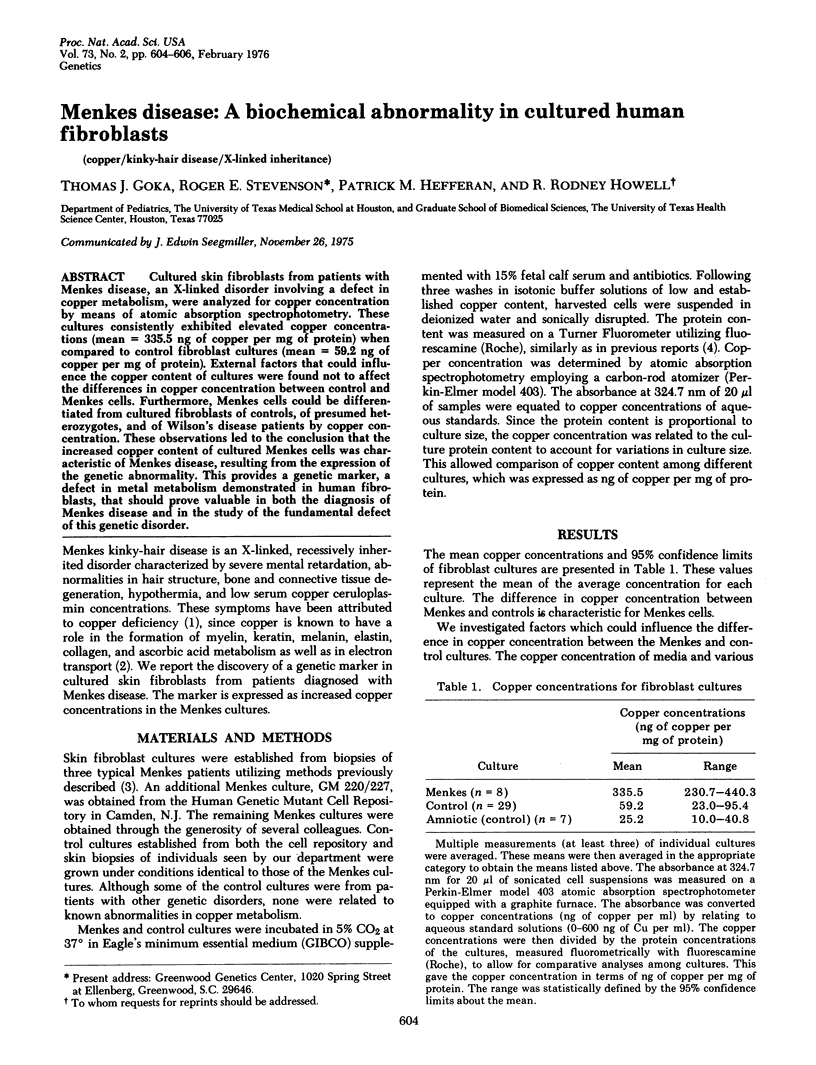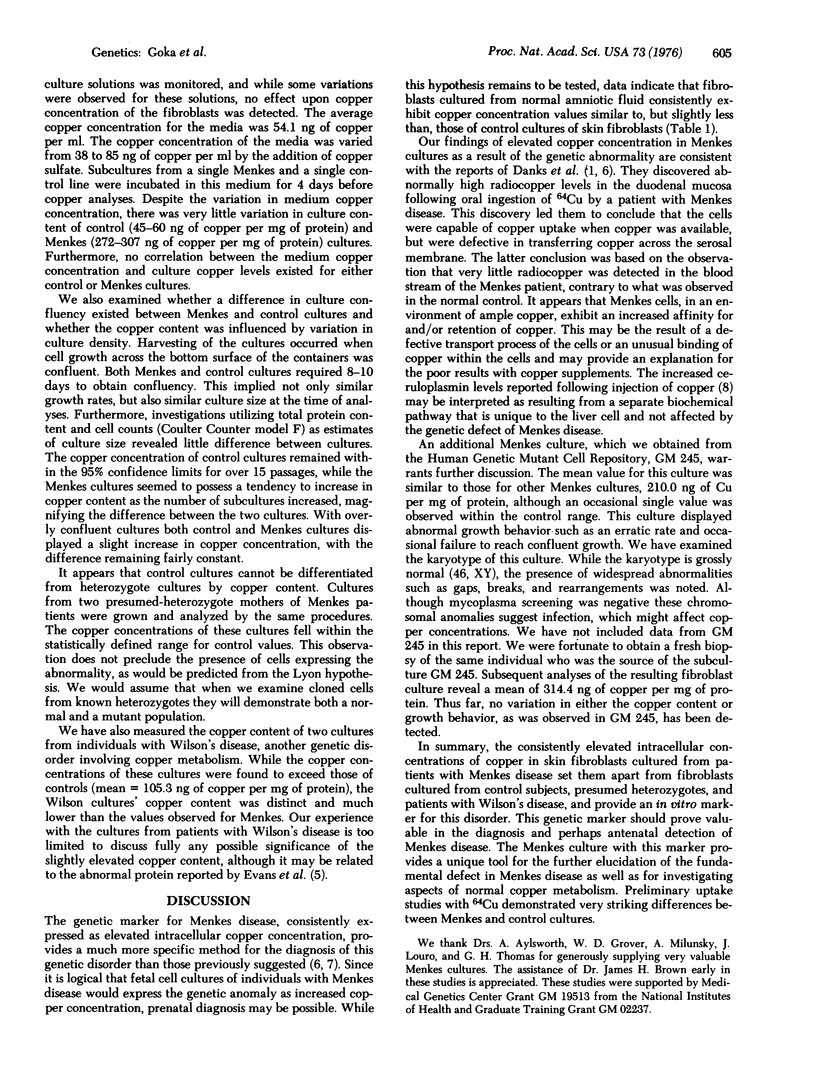Abstract
Cultured skin fibroblasts from patients with Menkes disease, an X-linked disorder involving a defect in copper metabolism, were analyzed for copper concentration by means of atomic absorption spectrophotometry. These cultures consistently exhibited elevated copper concentrations (mean = 335.5 ng of copper per mg of protein) when compared to control fibroblast cultures (mean = 59.2 ng of copper per mg of protein). External factors that could influence the copper content of cultures were found not to affect the differences in copper concentration between control and Menkes cells. Furthermore, Menkes cells could be differentiated from cultured fibroblasts of controls, of presumed heterozygotes, and of Wilson's disease patients by copper concentration. These observations led to the conclusion that the increased copper content of cultured Menkes cells was characteristic of Menkes disease, resulting from the expression of the genetic abnormality. This provides a genetic marker, a defect in metal metabolism demonstrated in human fibroblasts, that should prove valuable in both the diagnosis of Menkes disease and in the study of the fundamental defect of this genetic disorder.
Full text
PDF


Selected References
These references are in PubMed. This may not be the complete list of references from this article.
- Bucknall W. E., Haslam R. H., Holtzman N. A. Kinky hair syndrome: response to copper therapy. Pediatrics. 1973 Nov;52(5):653–657. [PubMed] [Google Scholar]
- Böhlen P., Stein S., Dairman W., Udenfriend S. Fluorometric assay of proteins in the nanogram range. Arch Biochem Biophys. 1973 Mar;155(1):213–220. doi: 10.1016/s0003-9861(73)80023-2. [DOI] [PubMed] [Google Scholar]
- Danks D. M., Campbell P. E., Walker-Smith J., Stevens B. J., Gillespie J. M., Blomfield J., Turner B. Menkes' kinky-hair syndrome. Lancet. 1972 May 20;1(7760):1100–1102. doi: 10.1016/s0140-6736(72)91433-x. [DOI] [PubMed] [Google Scholar]
- Danks D. M., Cartwright E., Stevens B. J., Townley R. R. Menkes' kinky hair disease: further definition of the defect in copper transport. Science. 1973 Mar 16;179(4078):1140–1142. doi: 10.1126/science.179.4078.1140. [DOI] [PubMed] [Google Scholar]
- Evans G. W., Bubois R. S., Hambidge K. M. Wilson's disease: identification of an abnormal copper-binding protein. Science. 1973 Sep 21;181(4105):1175–1176. doi: 10.1126/science.181.4105.1175. [DOI] [PubMed] [Google Scholar]
- Kaback M. M., Howell R. R. Infantile metachromatic leukodystrophy. N Engl J Med. 1970 Jun 11;282(24):1336–1340. doi: 10.1056/NEJM197006112822403. [DOI] [PubMed] [Google Scholar]
- Kozlowski K., Walker-Smith J. A. Bone changes in Menkes' kinky hair syndrome. Radiol Diagn (Berl) 1973;14(6):693–700. [PubMed] [Google Scholar]
- Singh S., Bresnan M. J. Menkes kinky-hair syndrome. (Trichopoliodystrophy). Low copper levels in the blood, hair, and urine. Am J Dis Child. 1973 Apr;125(4):572–578. doi: 10.1001/archpedi.1973.04160040072015. [DOI] [PubMed] [Google Scholar]


